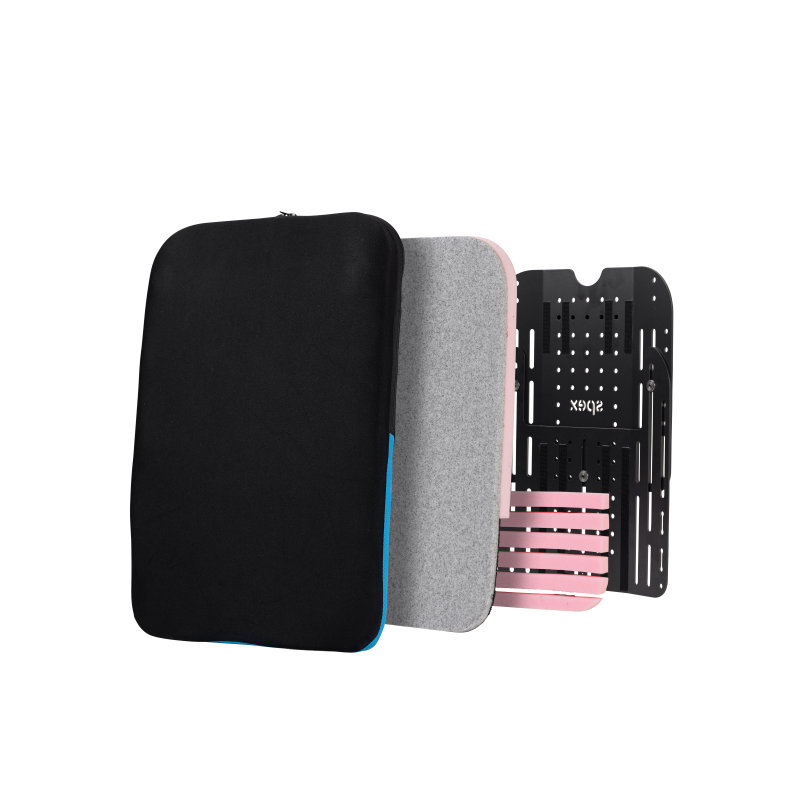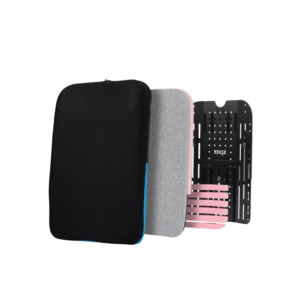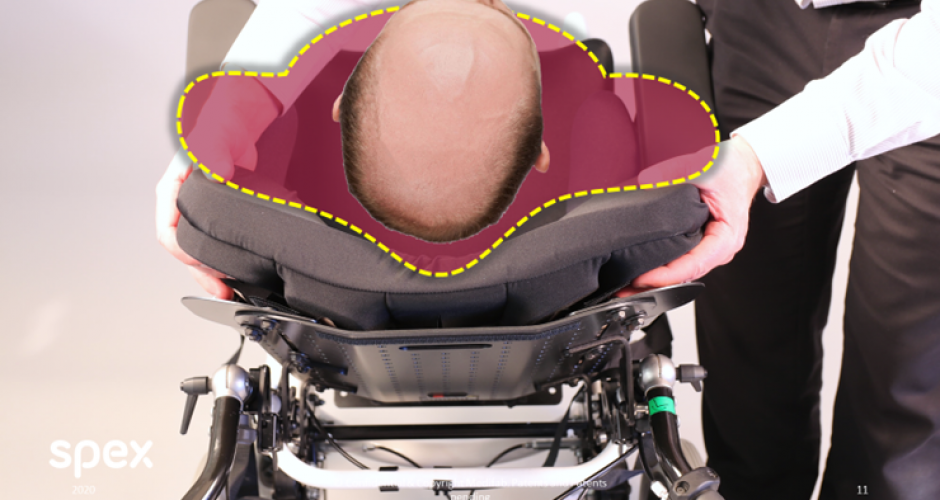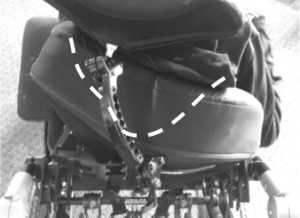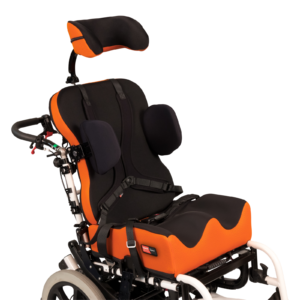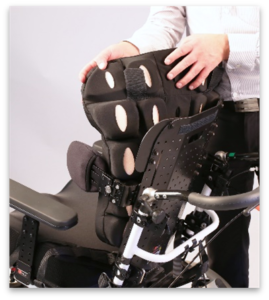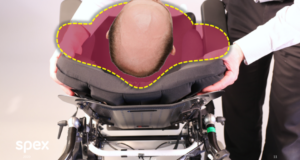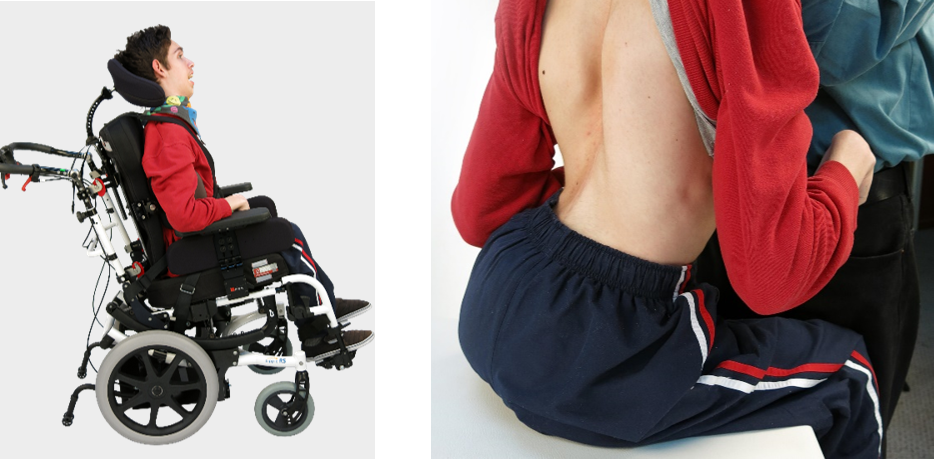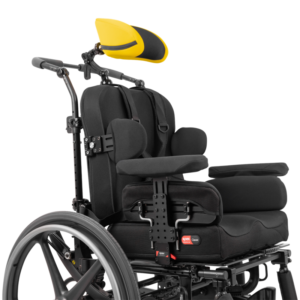Basic wheelchair measurements include the shoulder width, chest width (from armpit to armpit) and hip width. These width measures must be considered and accommodated when prescribing the wheelchair chassis and corresponding modular seating options to optimise:
- Functional ability for self-propelling, without limiting shoulder range of movement,
- Immersion into the back support for pressure offloading and distribution to prevent tissue deformation and skin integrity risks,
- Support where it is biomechanically required to meet the unique postural needs of the wheelchair user’s body shape, and
- Configurability for changes to body shape requirements.
The main purpose of the back support in the wheelchair is to offer posterior support to the trunk – it is a primary posterior support surface allowing weight-bearing and reinforcing support against the effects of gravity to reduce the effort of sitting. It can also provide support behind the pelvis, helping to align the pelvis into a more neutral position.
Availability of off-the-shelf back supports that allow for responsiveness to complex body shapes can be a challenge – Spex seating technology aims to provide modular off-the-shelf solutions that can be ordered and configured to respond to increased complexity.
Much like the height of a back support, the width can vary based on the level of support required. An additional factor which can affect the width of the back support is if the back support and shell need to have the ability to move between the wheelchair back posts to allow for seat depth adjustment and/or recline.
| Spex (Height-Adjustable and Classic) Back Supports | Spex Mantaray Back Support |
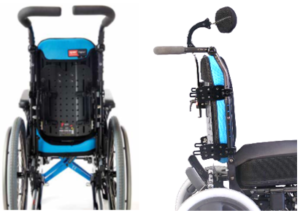 |
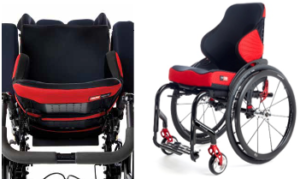 |
|
|
Can Spex seating technology respond to this future-proofing need?
Children may grow more quickly in height than width initially, but width adjustments will need to be considered. Factors such as weight fluctuations, changes in clinical conditions, and growth must be considered to avoid incorrect fit of the wheelchair and result in postural instability.
It is possible to order the back support surface sizing to be a slim-fit, default fit or custom fit so that increased contouring and support is required. It is also possible to order a 1” wider back support shell and default fit padding and mount it onto a narrower chair with use of the width adjustable brackets (this would mean the back support being mounted in front of the back posts with no seat depth extension within the Spex hardware.
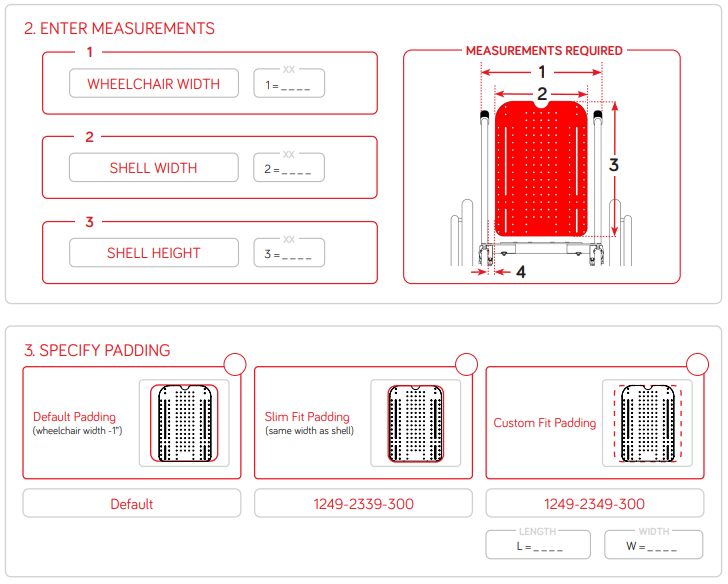
Figure 6 – Spex script form page 20 – available here
If the overall body width measurements are likely to change, then both back support shell and support surface sizes may need to be considered for future-proofing. This can help with changes if the back support shell is to move between different chassis, the back support needs to respond to growth or shape changes or there is a need for greater trunk width support for the user.
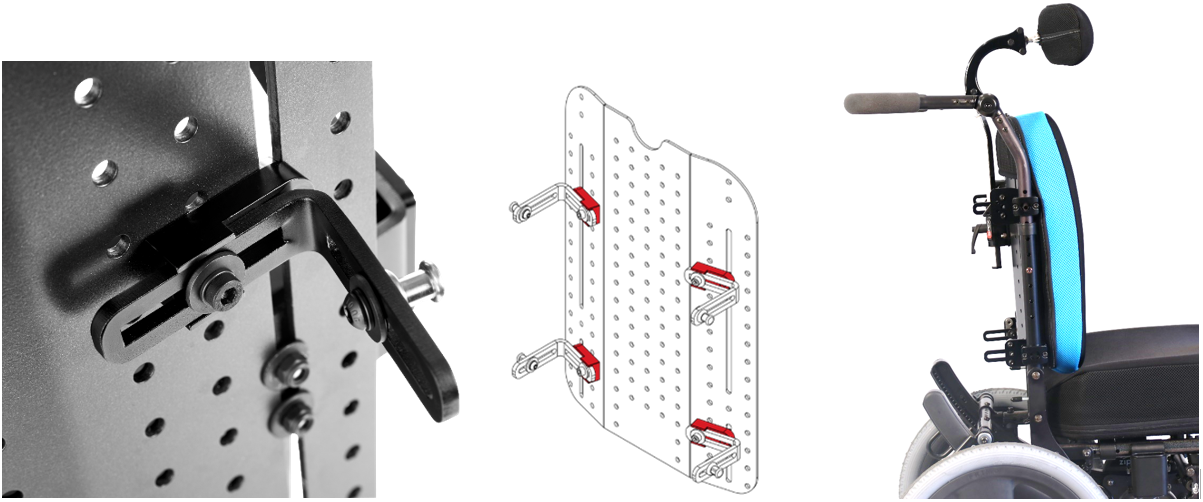
Figure 7. Width adjustable quad mount hardware for mounting a wider back support shell onto chair with a narrower seat width.
Spex seating technology offers both width adjustment considerations in the back support surface and the back support shell. These are both off the shelf solutions that come together as default for a set size or ordered separately for a more bespoke personalised fit.
Ordering a wider back support surface that is configurable/contourable to the user’s body shape can accomplish the following:
- Wrap around the trunk to provide a greater surface area for pressure distribution,
- Envelope and immerse the trunk for greater sensory feedback to inform the body schema,
- Provide additional cushioning to exposed lateral trunk support hardware,
- Meet individual body shape contouring, offering reinforced support against gravity,
- Improved posterior and lateral stability to the trunk to reduce the effort of sitting and optimise function of the arms, and
- Provide additional comfort when seated in the wheelchair.
The width of back support is dependent on the wheelchair user’s unique postural, functional, comfort needs and future needs – as indicated in your clinical assessment. Simulating the seating system is helpful to assess whether the selected back support width is correct and whether it allows necessary function with the appropriate biomechanical support.
If you have any queries, please do not hesitate to contact us.
- Bobath, B. (1990). Adult hemiplegia: Evaluation and treatment (3rd ed.). Butterworth Heinemann.
- Chisholm, J.-A., & Yip, J. (2018). Chapter 2: Pressure Management for the seated client. In Seating and Wheeled Mobility: A Clinical Resource Guide (pp. 27–46). Slack Incorporated.
- Gallagher, S. & Cole, J. (1995). Body schema and body image in a deafferented subject. Journal of Mind and Behavior 16, 369-390; reprinted in Body and Flesh: A Philosophical Reader, ed. Donn Welton. Oxford: Blackwell, pp. 131-147.
- Irvine, K. R., McCarty, K., McKenzie, K. J., Pollet, T. V., Cornelissen, K. K., Tovée, M. J., & Cornelissen, P. L. (2019). Distorted body image influences body schema in individuals with negative bodily attitudes. Neuropsychologia, 122, 38–50. https://doi.org/10.1016/j.neuropsychologia.2018.11.015
- Menegon, E. (2013). Postural control as the basic treatment of the neurological patient. BBTA. https://www.bbta.org.uk/free/resources/download/30
- Sprigle, S., Wootten, M., Sawacha, Z., Thielman, G., & Theilman, G. (2003). Relationships among cushion type, backrest height, seated posture, and reach of wheelchair users with spinal cord injury. The Journal of Spinal Cord Medicine, 26(3), 236–243. https://doi.org/10.1080/10790268.2003.11753690
- Ukita, A., Abe, M., Kishigami, H., & Hatta, T. (2020). Influence of back support shape in wheelchairs offering pelvic support on asymmetrical sitting posture and pressure points during reaching tasks in stroke patients. PLOS ONE, 15(4), e0231860. https://doi.org/10.1371/journal.pone.0231860
- Wee, S. K., Hughes, A.-M., Warner, M. B., Brown, S., Cranny, A., Mazomenos, E. B., & Burridge, J. H. (2015). Effect of Trunk Support on Upper Extremity Function in People With Chronic Stroke and People Who Are Healthy. Physical Therapy, 95(8), 1163–1171. https://doi.org/10.2522/ptj.20140487
